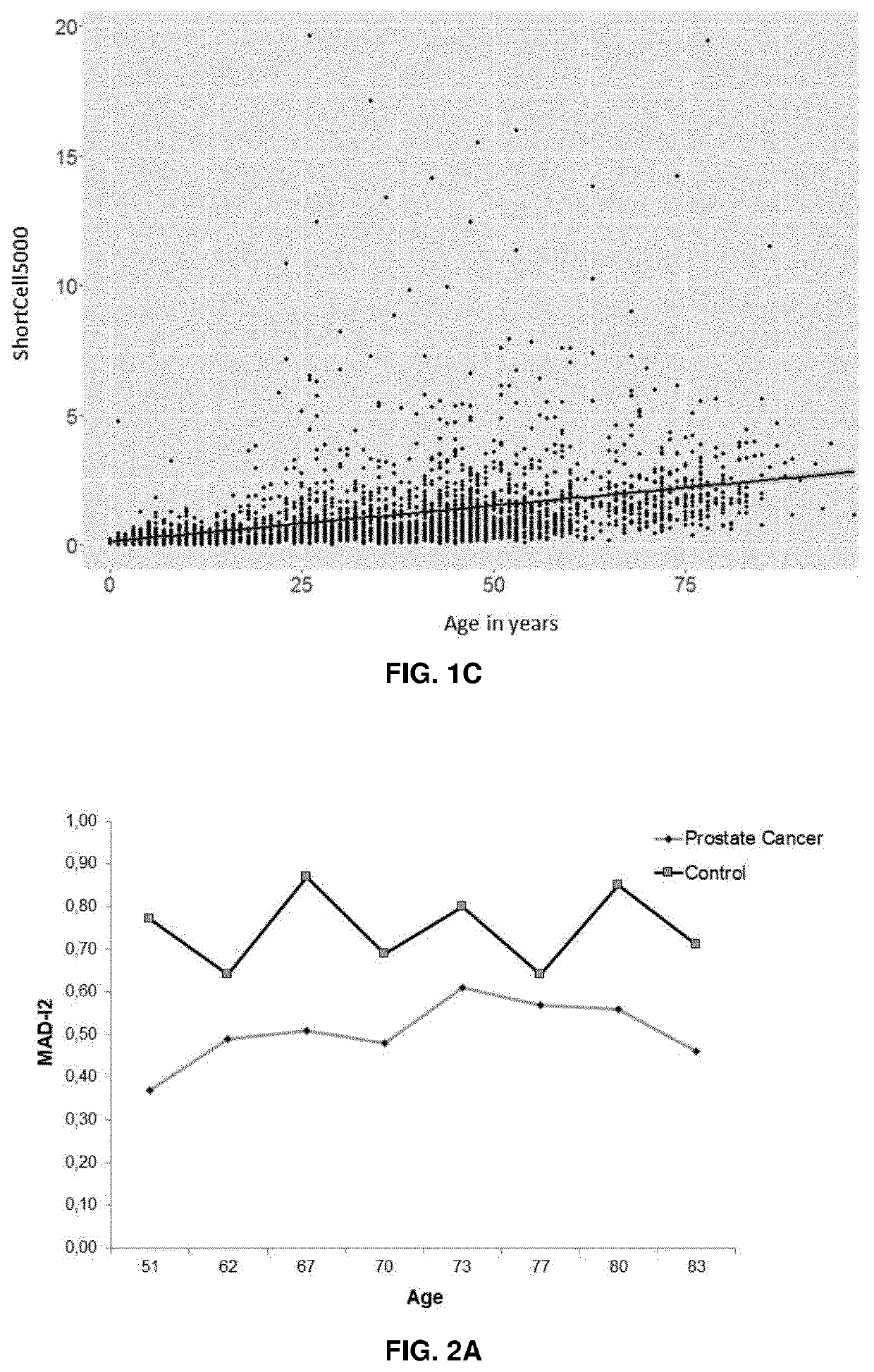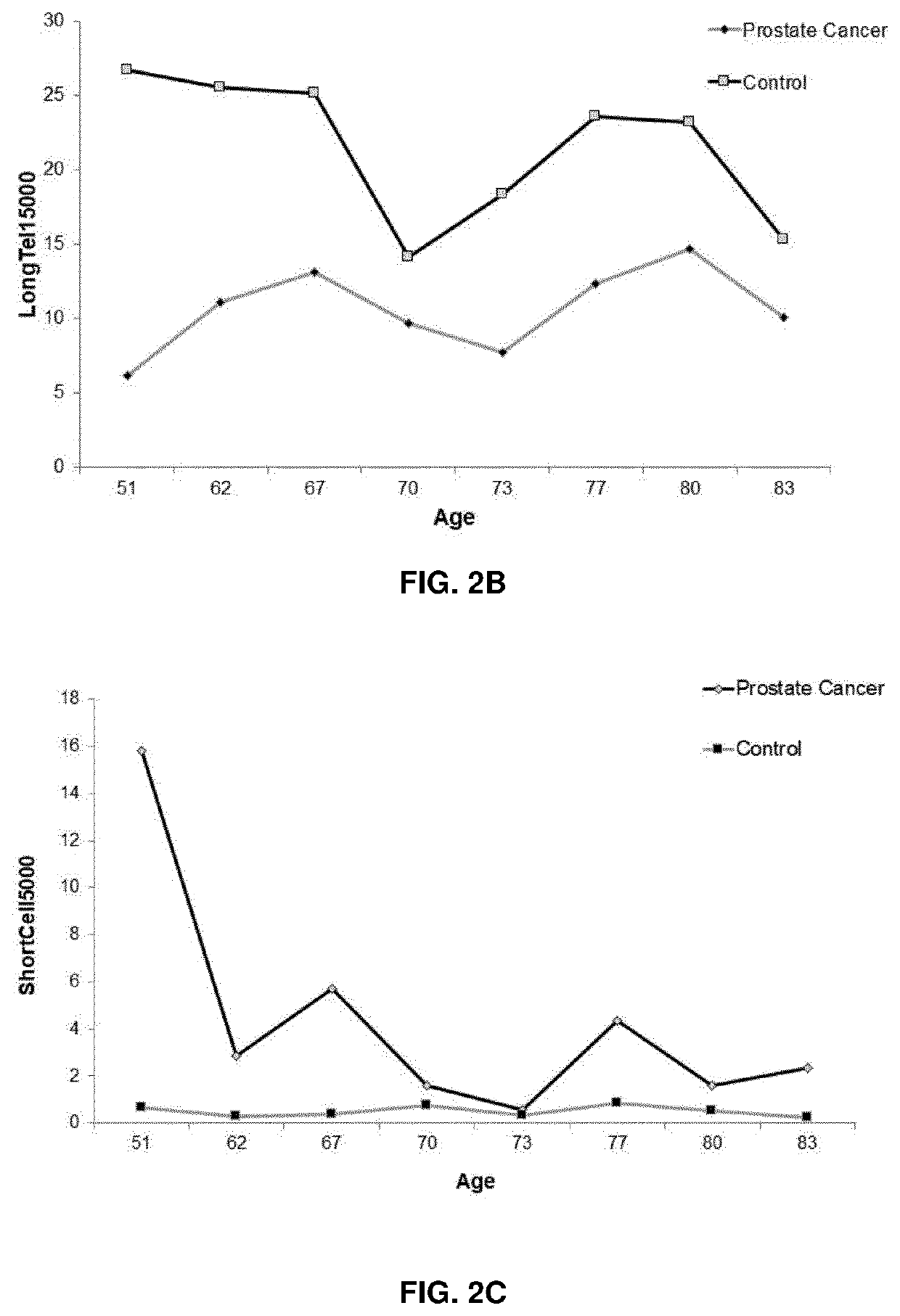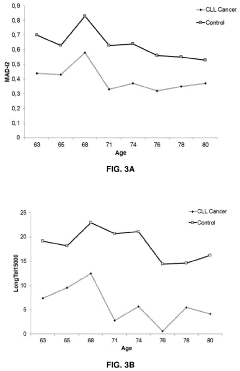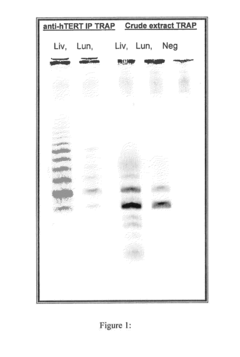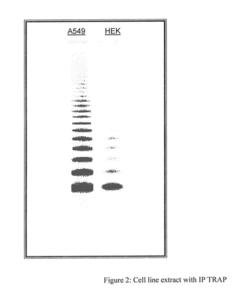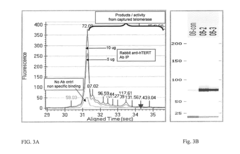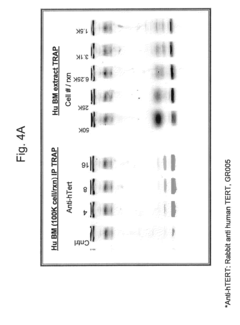Advances in Measuring Tautomerization Rates in Biological Systems
JUL 29, 20259 MIN READ
Generate Your Research Report Instantly with AI Agent
Patsnap Eureka helps you evaluate technical feasibility & market potential.
Tautomerization Background and Research Objectives
Tautomerization, a fundamental process in organic chemistry and biochemistry, involves the rapid interconversion between structural isomers. This phenomenon plays a crucial role in various biological systems, affecting protein-ligand interactions, enzyme catalysis, and DNA base pairing. The study of tautomerization rates in biological contexts has gained significant attention in recent years due to its implications for drug design, understanding disease mechanisms, and developing novel therapeutic approaches.
The historical development of tautomerization research dates back to the early 20th century when chemists first recognized the existence of rapidly interconverting isomers. However, the measurement of tautomerization rates in biological systems has presented unique challenges due to the complexity of the cellular environment and the rapid nature of these transformations. Traditional spectroscopic methods often lacked the temporal resolution necessary to capture these fast-paced events accurately.
Recent technological advancements have revolutionized our ability to measure tautomerization rates in biological systems. The development of ultrafast spectroscopy techniques, such as femtosecond laser spectroscopy and time-resolved fluorescence spectroscopy, has enabled researchers to probe tautomerization dynamics on previously inaccessible timescales. These methods have provided unprecedented insights into the kinetics and mechanisms of tautomeric transitions in biomolecules.
The primary objectives of current research in this field are multifaceted. First, there is a pressing need to develop more sensitive and precise measurement techniques that can capture tautomerization events in complex biological environments. This includes the refinement of existing spectroscopic methods and the exploration of novel approaches, such as single-molecule spectroscopy and advanced NMR techniques.
Another critical goal is to elucidate the factors influencing tautomerization rates in biological systems. This involves investigating the effects of pH, temperature, ionic strength, and the presence of specific biomolecules on tautomeric equilibria. Understanding these influences is essential for predicting and controlling tautomerization in various biological processes.
Furthermore, researchers aim to establish comprehensive databases of tautomerization rates for biologically relevant molecules. Such databases would serve as valuable resources for computational modeling and drug design efforts, enabling more accurate predictions of molecular behavior in biological systems.
The ultimate objective of this research is to translate the fundamental understanding of tautomerization kinetics into practical applications. This includes developing new strategies for drug design that account for tautomeric preferences, improving our understanding of enzyme mechanisms, and potentially manipulating tautomerization rates to modulate biological processes for therapeutic purposes.
As the field progresses, interdisciplinary collaboration between chemists, biologists, and computational scientists will be crucial in addressing these complex research objectives and advancing our understanding of tautomerization in biological systems.
The historical development of tautomerization research dates back to the early 20th century when chemists first recognized the existence of rapidly interconverting isomers. However, the measurement of tautomerization rates in biological systems has presented unique challenges due to the complexity of the cellular environment and the rapid nature of these transformations. Traditional spectroscopic methods often lacked the temporal resolution necessary to capture these fast-paced events accurately.
Recent technological advancements have revolutionized our ability to measure tautomerization rates in biological systems. The development of ultrafast spectroscopy techniques, such as femtosecond laser spectroscopy and time-resolved fluorescence spectroscopy, has enabled researchers to probe tautomerization dynamics on previously inaccessible timescales. These methods have provided unprecedented insights into the kinetics and mechanisms of tautomeric transitions in biomolecules.
The primary objectives of current research in this field are multifaceted. First, there is a pressing need to develop more sensitive and precise measurement techniques that can capture tautomerization events in complex biological environments. This includes the refinement of existing spectroscopic methods and the exploration of novel approaches, such as single-molecule spectroscopy and advanced NMR techniques.
Another critical goal is to elucidate the factors influencing tautomerization rates in biological systems. This involves investigating the effects of pH, temperature, ionic strength, and the presence of specific biomolecules on tautomeric equilibria. Understanding these influences is essential for predicting and controlling tautomerization in various biological processes.
Furthermore, researchers aim to establish comprehensive databases of tautomerization rates for biologically relevant molecules. Such databases would serve as valuable resources for computational modeling and drug design efforts, enabling more accurate predictions of molecular behavior in biological systems.
The ultimate objective of this research is to translate the fundamental understanding of tautomerization kinetics into practical applications. This includes developing new strategies for drug design that account for tautomeric preferences, improving our understanding of enzyme mechanisms, and potentially manipulating tautomerization rates to modulate biological processes for therapeutic purposes.
As the field progresses, interdisciplinary collaboration between chemists, biologists, and computational scientists will be crucial in addressing these complex research objectives and advancing our understanding of tautomerization in biological systems.
Biological Relevance of Tautomerization Kinetics
Tautomerization, the rapid interconversion between structural isomers, plays a crucial role in various biological processes. The kinetics of tautomerization in biological systems have significant implications for enzyme catalysis, drug-target interactions, and genetic mutations. Understanding these rates is essential for accurately predicting and manipulating biological functions at the molecular level.
In enzyme catalysis, tautomerization can be a rate-limiting step in many reactions. For instance, the keto-enol tautomerization of substrates in the active sites of enzymes like triosephosphate isomerase and ketosteroid isomerase is critical for their catalytic mechanisms. The precise measurement of tautomerization rates in these systems allows for a deeper understanding of enzyme efficiency and the design of more effective biocatalysts.
Drug-target interactions are another area where tautomerization kinetics are of paramount importance. Many drug molecules can exist in multiple tautomeric forms, each potentially having different binding affinities to their target proteins. The rate at which these forms interconvert can significantly impact drug efficacy and pharmacokinetics. Accurate measurement of tautomerization rates in drug-like molecules can lead to improved drug design strategies and more precise predictions of drug behavior in vivo.
Genetic mutations and DNA repair mechanisms are also influenced by tautomerization kinetics. The rare tautomeric forms of DNA bases can lead to mispairing during replication, potentially resulting in mutations. The rate at which these rare tautomers form and revert to their standard forms is crucial in determining the frequency of spontaneous mutations. Understanding these rates can provide insights into the mechanisms of mutagenesis and DNA repair processes.
Moreover, tautomerization plays a role in protein folding and stability. The tautomeric state of certain amino acid residues can affect local electrostatic interactions and hydrogen bonding patterns, influencing the overall protein structure. Measuring tautomerization rates in protein environments can help elucidate the dynamics of protein folding and the factors contributing to protein stability.
In the field of structural biology, tautomerization kinetics are relevant for interpreting experimental data. X-ray crystallography and NMR spectroscopy, two primary methods for determining biomolecular structures, can be affected by rapid tautomerization. Accurate knowledge of tautomerization rates can aid in the correct interpretation of structural data and improve the resolution of biomolecular structures.
In enzyme catalysis, tautomerization can be a rate-limiting step in many reactions. For instance, the keto-enol tautomerization of substrates in the active sites of enzymes like triosephosphate isomerase and ketosteroid isomerase is critical for their catalytic mechanisms. The precise measurement of tautomerization rates in these systems allows for a deeper understanding of enzyme efficiency and the design of more effective biocatalysts.
Drug-target interactions are another area where tautomerization kinetics are of paramount importance. Many drug molecules can exist in multiple tautomeric forms, each potentially having different binding affinities to their target proteins. The rate at which these forms interconvert can significantly impact drug efficacy and pharmacokinetics. Accurate measurement of tautomerization rates in drug-like molecules can lead to improved drug design strategies and more precise predictions of drug behavior in vivo.
Genetic mutations and DNA repair mechanisms are also influenced by tautomerization kinetics. The rare tautomeric forms of DNA bases can lead to mispairing during replication, potentially resulting in mutations. The rate at which these rare tautomers form and revert to their standard forms is crucial in determining the frequency of spontaneous mutations. Understanding these rates can provide insights into the mechanisms of mutagenesis and DNA repair processes.
Moreover, tautomerization plays a role in protein folding and stability. The tautomeric state of certain amino acid residues can affect local electrostatic interactions and hydrogen bonding patterns, influencing the overall protein structure. Measuring tautomerization rates in protein environments can help elucidate the dynamics of protein folding and the factors contributing to protein stability.
In the field of structural biology, tautomerization kinetics are relevant for interpreting experimental data. X-ray crystallography and NMR spectroscopy, two primary methods for determining biomolecular structures, can be affected by rapid tautomerization. Accurate knowledge of tautomerization rates can aid in the correct interpretation of structural data and improve the resolution of biomolecular structures.
Current Challenges in Measuring Tautomerization
Measuring tautomerization rates in biological systems presents several significant challenges that researchers are currently grappling with. One of the primary difficulties lies in the rapid nature of tautomerization processes, which often occur on timescales faster than conventional spectroscopic techniques can capture. This speed necessitates the development and application of ultrafast spectroscopy methods, which themselves come with technical hurdles in terms of equipment sensitivity and data interpretation.
Another major challenge is the complexity of biological environments. Tautomerization in isolated molecules is relatively well-understood, but in biological systems, the process is influenced by a myriad of factors including pH, temperature, ionic strength, and the presence of surrounding biomolecules. These variables can significantly alter tautomerization rates and equilibria, making it difficult to obtain accurate measurements that reflect physiological conditions.
The heterogeneity of biological samples further complicates measurements. Unlike controlled in vitro experiments with purified compounds, biological systems contain a diverse array of molecules that can interfere with spectroscopic signals or participate in competing reactions. This heterogeneity often results in overlapping spectral features, making it challenging to isolate and quantify the specific tautomerization events of interest.
Additionally, the dynamic nature of biological systems poses a significant challenge. Cellular processes are in constant flux, with molecules undergoing continuous synthesis, degradation, and modification. This dynamism makes it difficult to capture tautomerization rates at specific biological moments or in response to particular cellular events.
The low concentration of many biologically relevant tautomers also presents a detection challenge. Many important biomolecules exist in relatively small quantities within cells, pushing the limits of current detection methods. This is particularly problematic when trying to measure minor tautomeric forms that may have significant biological impacts despite their low abundance.
Furthermore, the potential for tautomerization to be coupled with other biochemical processes adds another layer of complexity. For instance, tautomerization may be linked to enzymatic reactions, conformational changes in proteins, or membrane transport processes. Disentangling these interconnected phenomena to isolate and measure tautomerization rates accurately is a formidable task.
Lastly, there is a need for standardization in measurement techniques and data reporting. The diversity of methods used to study tautomerization in biological systems can make it difficult to compare results across different studies. Establishing consensus protocols and reporting standards is crucial for advancing the field and ensuring the reproducibility of measurements.
Another major challenge is the complexity of biological environments. Tautomerization in isolated molecules is relatively well-understood, but in biological systems, the process is influenced by a myriad of factors including pH, temperature, ionic strength, and the presence of surrounding biomolecules. These variables can significantly alter tautomerization rates and equilibria, making it difficult to obtain accurate measurements that reflect physiological conditions.
The heterogeneity of biological samples further complicates measurements. Unlike controlled in vitro experiments with purified compounds, biological systems contain a diverse array of molecules that can interfere with spectroscopic signals or participate in competing reactions. This heterogeneity often results in overlapping spectral features, making it challenging to isolate and quantify the specific tautomerization events of interest.
Additionally, the dynamic nature of biological systems poses a significant challenge. Cellular processes are in constant flux, with molecules undergoing continuous synthesis, degradation, and modification. This dynamism makes it difficult to capture tautomerization rates at specific biological moments or in response to particular cellular events.
The low concentration of many biologically relevant tautomers also presents a detection challenge. Many important biomolecules exist in relatively small quantities within cells, pushing the limits of current detection methods. This is particularly problematic when trying to measure minor tautomeric forms that may have significant biological impacts despite their low abundance.
Furthermore, the potential for tautomerization to be coupled with other biochemical processes adds another layer of complexity. For instance, tautomerization may be linked to enzymatic reactions, conformational changes in proteins, or membrane transport processes. Disentangling these interconnected phenomena to isolate and measure tautomerization rates accurately is a formidable task.
Lastly, there is a need for standardization in measurement techniques and data reporting. The diversity of methods used to study tautomerization in biological systems can make it difficult to compare results across different studies. Establishing consensus protocols and reporting standards is crucial for advancing the field and ensuring the reproducibility of measurements.
State-of-the-Art Tautomerization Measurement Techniques
01 Spectroscopic methods for measuring tautomerization rates
Spectroscopic techniques, such as NMR and UV-Vis spectroscopy, are commonly used to measure tautomerization rates. These methods can provide high accuracy and real-time monitoring of tautomeric equilibria. The accuracy of measurements can be improved by using advanced spectroscopic equipment and data analysis techniques.- Spectroscopic methods for measuring tautomerization rates: Spectroscopic techniques, such as NMR and UV-Vis spectroscopy, are used to measure tautomerization rates with high accuracy. These methods allow for real-time monitoring of structural changes and can detect even subtle shifts in molecular configurations, providing precise data on the kinetics of tautomerization processes.
- Computational modeling for tautomerization rate prediction: Advanced computational modeling techniques are employed to predict and analyze tautomerization rates. These methods use quantum mechanical calculations and molecular dynamics simulations to estimate energy barriers and transition states, improving the accuracy of tautomerization rate measurements and predictions.
- High-resolution mass spectrometry for tautomer analysis: High-resolution mass spectrometry techniques are utilized to distinguish between tautomeric forms and measure their interconversion rates. These methods offer excellent sensitivity and can detect minute changes in molecular mass, allowing for accurate quantification of tautomerization processes in complex systems.
- Microfluidic devices for rapid tautomerization rate measurements: Microfluidic devices are developed to facilitate rapid and precise measurements of tautomerization rates. These miniaturized systems allow for controlled reaction environments and real-time monitoring, enabling high-throughput analysis of tautomerization kinetics with improved accuracy and reproducibility.
- Temperature-controlled systems for accurate tautomerization studies: Specialized temperature-controlled systems are designed to maintain precise thermal conditions during tautomerization rate measurements. These setups ensure consistent and accurate results by minimizing temperature fluctuations that could affect the kinetics of tautomerization processes, thereby improving the overall measurement accuracy.
02 Computational methods for predicting tautomerization rates
Computational approaches, including quantum mechanical calculations and molecular dynamics simulations, can be used to predict tautomerization rates and equilibrium constants. These methods can provide insights into tautomerization mechanisms and help improve the accuracy of experimental measurements by guiding experimental design.Expand Specific Solutions03 Microfluidic devices for tautomerization rate measurements
Microfluidic devices can be used to measure tautomerization rates with high precision. These devices allow for controlled reaction conditions and rapid mixing, enabling accurate measurements of fast tautomerization processes. The use of microfluidic technology can improve measurement accuracy by minimizing sample volumes and reducing experimental errors.Expand Specific Solutions04 Temperature and pH control for accurate tautomerization measurements
Precise control of temperature and pH is crucial for accurate tautomerization rate measurements. Advanced temperature control systems and pH monitoring devices can be used to maintain stable conditions during experiments. This approach helps to minimize environmental factors that could affect the accuracy of tautomerization rate measurements.Expand Specific Solutions05 High-resolution mass spectrometry for tautomer analysis
High-resolution mass spectrometry techniques can be employed to analyze tautomeric species and measure their interconversion rates. These methods offer high sensitivity and can distinguish between closely related tautomeric structures. The use of advanced mass spectrometry equipment and data processing algorithms can significantly improve the accuracy of tautomerization rate measurements.Expand Specific Solutions
Key Research Groups and Institutions
The field of measuring tautomerization rates in biological systems is in a dynamic phase of development, with significant advancements being made. The market for this technology is expanding, driven by its crucial role in drug discovery and biochemical research. While the market size is not precisely quantified, it is growing due to increased demand in pharmaceutical and biotechnology sectors. Technologically, the field is progressing rapidly, with institutions like Zhejiang University, University of Warwick, and Harvard College leading academic research. Companies such as Geron Corp., Siemens Healthineers AG, and GlaxoSmithKline LLC are investing in related technologies, indicating a moderate level of technological maturity with room for further innovation and commercialization.
Zhejiang University
Technical Solution: Zhejiang University has pioneered the use of ultrafast spectroscopy techniques to measure tautomerization rates in biological systems. Their approach combines femtosecond laser pulses with advanced time-resolved fluorescence spectroscopy to capture tautomerization dynamics on extremely short timescales[2]. By utilizing custom-designed fluorescent probes that exhibit distinct spectral signatures for different tautomeric forms, they can track tautomerization events in real-time within cellular environments. The university has also developed novel microfluidic devices that enable high-throughput screening of tautomerization rates under various physiological conditions, significantly accelerating the study of these processes in complex biological systems[4].
Strengths: Ultrafast spectroscopy expertise, custom probe design, and high-throughput capabilities. Weaknesses: Potential limitations in studying larger biomolecules or membrane-bound systems.
University of Warwick
Technical Solution: The University of Warwick has made significant advancements in measuring tautomerization rates using a combination of single-molecule fluorescence techniques and advanced microscopy. Their approach utilizes Förster Resonance Energy Transfer (FRET) to detect conformational changes associated with tautomerization in individual biomolecules[6]. By employing specially designed FRET pairs and total internal reflection fluorescence (TIRF) microscopy, they can observe tautomerization events at the single-molecule level with high spatial and temporal resolution. Additionally, Warwick researchers have developed innovative data analysis algorithms that can distinguish between tautomerization and other conformational changes, providing unprecedented insights into these processes in complex biological environments[8].
Strengths: Single-molecule resolution, ability to study tautomerization in situ, and advanced data analysis capabilities. Weaknesses: Limited to fluorescently labeled molecules and potential photobleaching issues.
Breakthrough Studies in Biological Tautomerization
Method for measuring telomere associated variables and uses thereof for the diagnosis and/or prognosis of telomeric-associated diseases
PatentPendingUS20220106635A1
Innovation
- A method using high-resolution fluorescence microscopy and imaging to measure individual telomere lengths in absolute base pairs, allowing for the determination of specific Telomere Associated Variables (TAVs) such as percentiles, dispersion, and interquartile range, which provides a detailed profile of telomere distribution in a biological sample.
Assay for Telomerase Activity
PatentActiveUS20110212454A1
Innovation
- The method involves isolating telomerase enzyme on a solid support using anti-telomerase antibodies, combining it with a primer and nucleoside triphosphates, and extending the primer to produce an extension product, which is then detected to measure telomerase activity, allowing for improved sensitivity and accuracy.
Computational Approaches to Tautomerization Prediction
Computational approaches to tautomerization prediction have become increasingly sophisticated and accurate in recent years, offering valuable insights into the complex dynamics of tautomeric equilibria in biological systems. These methods leverage advanced algorithms and molecular modeling techniques to simulate and predict tautomerization rates with unprecedented precision.
One of the primary computational approaches involves quantum mechanical calculations, particularly density functional theory (DFT) methods. These techniques allow researchers to model the electronic structure of molecules and calculate energy barriers associated with tautomeric transitions. By employing high-level ab initio calculations, scientists can obtain accurate estimates of tautomerization rates and equilibrium constants.
Molecular dynamics (MD) simulations have also proven to be powerful tools in predicting tautomerization behavior. These simulations can model the time-dependent evolution of molecular systems, accounting for factors such as solvent effects and intermolecular interactions. Advanced MD techniques, such as metadynamics and umbrella sampling, enable the exploration of rare events and the calculation of free energy profiles associated with tautomeric transitions.
Machine learning approaches have recently emerged as promising alternatives for tautomerization prediction. By training on large datasets of experimentally determined tautomerization rates, these models can rapidly predict tautomeric behavior for novel compounds. Deep learning architectures, such as graph neural networks, have shown particular promise in capturing the complex relationships between molecular structure and tautomerization propensity.
Hybrid methods that combine quantum mechanical calculations with classical molecular mechanics (QM/MM) have also gained traction in tautomerization prediction. These approaches allow for the accurate modeling of tautomeric transitions within the context of larger biological systems, such as protein-ligand complexes or enzymatic active sites.
Recent advances in computational power and algorithm efficiency have enabled the application of these methods to increasingly complex systems. High-performance computing clusters and GPU acceleration have made it possible to perform large-scale simulations and quantum mechanical calculations on biologically relevant timescales.
Despite these advancements, challenges remain in accurately predicting tautomerization rates in complex biological environments. Factors such as pH, temperature, and the presence of specific biomolecules can significantly influence tautomeric equilibria. Ongoing research focuses on developing more sophisticated models that can account for these environmental factors and provide more accurate predictions in physiological conditions.
One of the primary computational approaches involves quantum mechanical calculations, particularly density functional theory (DFT) methods. These techniques allow researchers to model the electronic structure of molecules and calculate energy barriers associated with tautomeric transitions. By employing high-level ab initio calculations, scientists can obtain accurate estimates of tautomerization rates and equilibrium constants.
Molecular dynamics (MD) simulations have also proven to be powerful tools in predicting tautomerization behavior. These simulations can model the time-dependent evolution of molecular systems, accounting for factors such as solvent effects and intermolecular interactions. Advanced MD techniques, such as metadynamics and umbrella sampling, enable the exploration of rare events and the calculation of free energy profiles associated with tautomeric transitions.
Machine learning approaches have recently emerged as promising alternatives for tautomerization prediction. By training on large datasets of experimentally determined tautomerization rates, these models can rapidly predict tautomeric behavior for novel compounds. Deep learning architectures, such as graph neural networks, have shown particular promise in capturing the complex relationships between molecular structure and tautomerization propensity.
Hybrid methods that combine quantum mechanical calculations with classical molecular mechanics (QM/MM) have also gained traction in tautomerization prediction. These approaches allow for the accurate modeling of tautomeric transitions within the context of larger biological systems, such as protein-ligand complexes or enzymatic active sites.
Recent advances in computational power and algorithm efficiency have enabled the application of these methods to increasingly complex systems. High-performance computing clusters and GPU acceleration have made it possible to perform large-scale simulations and quantum mechanical calculations on biologically relevant timescales.
Despite these advancements, challenges remain in accurately predicting tautomerization rates in complex biological environments. Factors such as pH, temperature, and the presence of specific biomolecules can significantly influence tautomeric equilibria. Ongoing research focuses on developing more sophisticated models that can account for these environmental factors and provide more accurate predictions in physiological conditions.
Implications for Drug Design and Development
The advancements in measuring tautomerization rates in biological systems have significant implications for drug design and development. These improvements enable researchers to better understand the dynamic behavior of molecules in physiological environments, leading to more accurate predictions of drug-target interactions and improved efficacy of pharmaceutical compounds.
One of the primary benefits of enhanced tautomerization rate measurements is the ability to optimize drug candidates for specific targets. By understanding the tautomeric preferences of molecules under biological conditions, medicinal chemists can design compounds that maintain their desired form when interacting with target proteins. This knowledge allows for the development of drugs with improved binding affinity and selectivity, potentially reducing off-target effects and enhancing therapeutic outcomes.
Furthermore, accurate tautomerization rate data can inform computational models used in drug discovery. Molecular docking simulations and quantitative structure-activity relationship (QSAR) studies can be refined to account for tautomeric equilibria, resulting in more reliable predictions of drug-target interactions. This refinement can significantly reduce the time and resources required for lead optimization, accelerating the drug development process.
The impact of tautomerization on drug absorption, distribution, metabolism, and excretion (ADME) properties is another critical aspect that can be better addressed with improved measurement techniques. Understanding how tautomeric forms influence a drug's solubility, permeability, and metabolic stability can guide formulation strategies and dosing regimens, potentially enhancing bioavailability and reducing adverse effects.
Moreover, the ability to measure tautomerization rates in biological systems can shed light on the mechanisms of drug resistance. In some cases, the tautomeric behavior of a drug molecule may contribute to its susceptibility to enzymatic modifications or efflux pumps. By identifying these vulnerabilities, researchers can design more robust drug candidates that maintain their efficacy over time.
Lastly, the advances in tautomerization rate measurements can contribute to the development of novel drug delivery systems. By understanding how tautomeric equilibria shift in different physiological environments, researchers can design prodrugs or controlled-release formulations that leverage these changes to achieve targeted drug release or activation at specific sites within the body.
One of the primary benefits of enhanced tautomerization rate measurements is the ability to optimize drug candidates for specific targets. By understanding the tautomeric preferences of molecules under biological conditions, medicinal chemists can design compounds that maintain their desired form when interacting with target proteins. This knowledge allows for the development of drugs with improved binding affinity and selectivity, potentially reducing off-target effects and enhancing therapeutic outcomes.
Furthermore, accurate tautomerization rate data can inform computational models used in drug discovery. Molecular docking simulations and quantitative structure-activity relationship (QSAR) studies can be refined to account for tautomeric equilibria, resulting in more reliable predictions of drug-target interactions. This refinement can significantly reduce the time and resources required for lead optimization, accelerating the drug development process.
The impact of tautomerization on drug absorption, distribution, metabolism, and excretion (ADME) properties is another critical aspect that can be better addressed with improved measurement techniques. Understanding how tautomeric forms influence a drug's solubility, permeability, and metabolic stability can guide formulation strategies and dosing regimens, potentially enhancing bioavailability and reducing adverse effects.
Moreover, the ability to measure tautomerization rates in biological systems can shed light on the mechanisms of drug resistance. In some cases, the tautomeric behavior of a drug molecule may contribute to its susceptibility to enzymatic modifications or efflux pumps. By identifying these vulnerabilities, researchers can design more robust drug candidates that maintain their efficacy over time.
Lastly, the advances in tautomerization rate measurements can contribute to the development of novel drug delivery systems. By understanding how tautomeric equilibria shift in different physiological environments, researchers can design prodrugs or controlled-release formulations that leverage these changes to achieve targeted drug release or activation at specific sites within the body.
Unlock deeper insights with Patsnap Eureka Quick Research — get a full tech report to explore trends and direct your research. Try now!
Generate Your Research Report Instantly with AI Agent
Supercharge your innovation with Patsnap Eureka AI Agent Platform!

